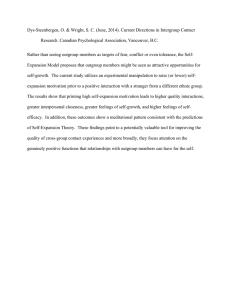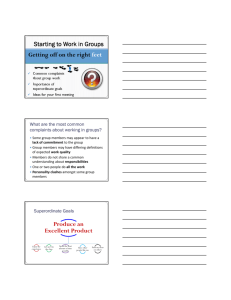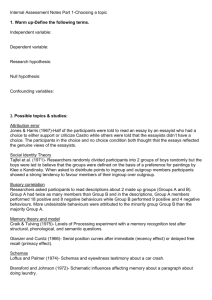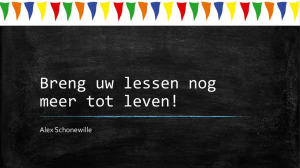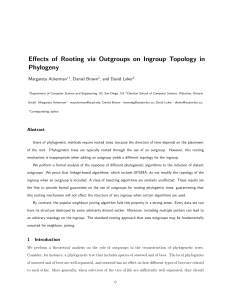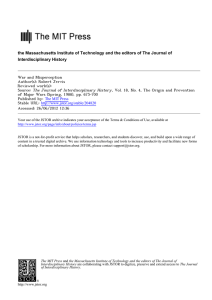Chapter One
advertisement
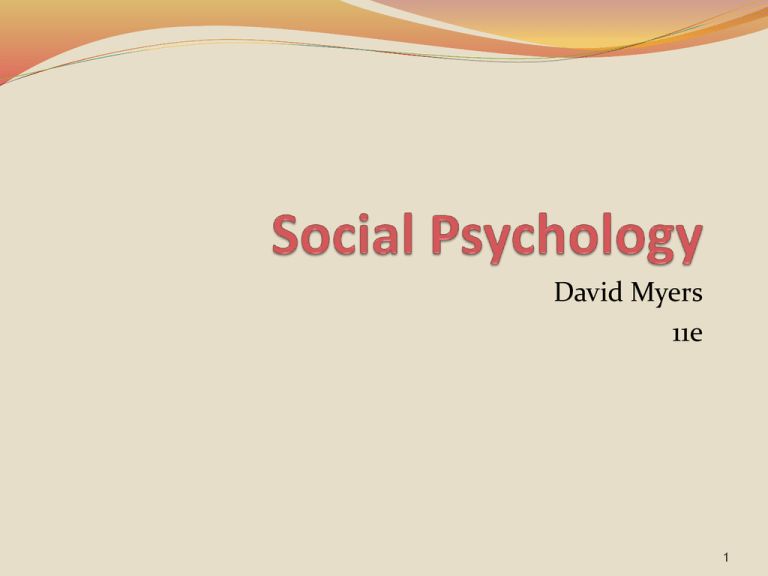
David Myers 11e 1 Chapter Thirteen Conflict and Peacemaking What creates conflict? How can peace be achieved? Postscript: The conflict between individual and communal rights What social situations feed conflict? How do misperceptions fuel conflict? Does contact with the other side reduce conflict? When do cooperation, communication, and mediation enable reconcillation 2 What Creates Conflict? Social Dilemmas Social trap Situation in which the conflicting parties, by each rationally pursuing its self-interest, become caught in mutually destructive behavior 3 What Creates Conflict? Social Dilemmas The “Prisoners Dilemma” What would you do? confess to be granted immunity? Deny guilt? What role does communication / not being able to play here? “Tragedy of the Commons” Fishers, crabbers in the Chesapeake Bay Global warming / water in California Fundamental attribution error Evolving motives- Vietnam & Iraq wars Non-zero-sum games- e.g. Prisoners dilemma 4 What Creates Conflict? Social Dilemmas Resolving social dilemmas Regulation (Government) Safeguard the common good Make the group small –visibility/ accountability What’s the optimal size? Communication – Robyn Dawes’ experiment (1980) 30% vs. 80% Change the payoffs Carpools –how does this change the payoffs? Appeal to altruistic norms (social norms) Why did 1/3 cooperate in “Wall Street Game” vs. 2/3 in “Community Game”? 5 What Creates Conflict? Competition (group identification is a prerequisite) Realistic group conflict (Sherif, 1966) Win-lose competition Negative images of the outgroup Strong ingroup cohesiveness Pride What are some real life examples? Of superordinate goals that bring groups together? 6 What Creates Conflict? Perceived Injustice People perceive justice as equity Ratio of outcomes to inputs for self and other Distribution of rewards in proportion to individuals’ contributions If one contributes more and benefits less, he will feel exploited As equality? E.g. family distributions of resources Does it depend upon equity or equality Other examples? Should it apply to poverty in America? 7 What Creates Conflict? Misperception Of other’s motives and goals Iran and U.S. Israel and Palestinians Seeds of misperception Self-serving bias Tendency to self-justify Fundamental attribution error 8 What Creates Conflict? Mirror-Image Perceptions Reciprocal views of each other often held by parties in conflict Example Each may view itself as moral and peace-loving and the other as evil and aggressive Iran, U.S. Russia, U.S. Baltimore Police, Black youth/community Others? Evil leader–good people illusion 9 What Creates Conflict? Simplistic Thinking When tension rises rational thinking becomes more difficult Views of the enemy become more simplistic and stereotyped Shifting Perceptions The same processes that create the enemy’s image can reverse it when the enemy becomes an ally 10 How Can Peace Be Achieved? Contact…generally predicts tolerance Predicts decreased prejudice Friendship Those who form friendships with outgroup members develop more positive attitudes toward the outgroup Minimize outgroup identity How can this be done? Equal-status contact Contact on an equal basis To reduce prejudice, interracial contact should be between persons equal in status Who have perceived choice in associating with one another Multiculturalism or Assimilation? Which is it? Hutu & Tutsi? Or just Rwandan? 11 How Can Peace Be Achieved? Cooperation Common external threats build cohesiveness E.g. army in Vietnam Superordinate goals foster cooperation Shared goal that necessitates cooperative effort Cooperative learning improves racial attitudes Aronson’s “jigsaw” technique Group and superordinate identities 12 How Can Peace Be Achieved? Communication Bargaining Seeking an agreement to a conflict through direct negotiation between parties Tough bargaining may lower the other party’s expectations, but can sometimes backfire Bush and Hussein 13 How Can Peace Be Achieved? Communication Mediation Attempt by a neutral third party to resolve a conflict by facilitating communication and offering suggestions Integrative agreements Win-win agreements that reconcile both parties’ interests to their mutual benefit Unravel misperceptions with controlled communications 14 How Can Peace Be Achieved? Communication Arbitration Resolution of a conflict by a neutral third party who studies both sides and imposes a settlement Final-offer arbitration Motivates each party to make a reasonable proposal 15 How Can Peace Be Achieved? Conciliation GRIT (Osgood, ‘62) Acronym for “graduated and reciprocated initiatives in tension reduction”—a strategy designed to de-escalate international tensions Real world applications Berlin crisis in 60’s Kennedy and Khrushchev ‘63 16
